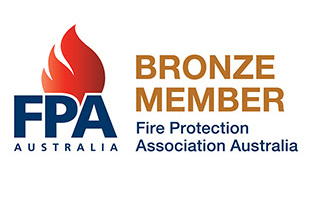BLOG
April 7, 2025
Fire safety is a critical component of any workplace or commercial environment, and one of the most essential tools for fire safety is the fire extinguisher. However, simply having fire extinguishers on-site is not enough. Ensuring they are functioning correctly and compliant with local regulations is crucial to maintaining safety and avoiding penalties.
This blog will outline the legal requirements for fire extinguisher testing, including testing intervals, servicing best practices, and how regular checks can help businesses stay compliant with fire safety laws. By the end of this article, you’ll understand the importance of fire extinguisher testing and why it should be a priority for your business.
Fire extinguishers are your first line of defence in case of a fire. However, if they aren’t working correctly, they can do more harm than good. Testing and servicing fire extinguishers ensure they will perform as expected during an emergency.
The Australian Standards (AS 1851) outline the requirements for regular maintenance and testing of fire extinguishers. Compliance with these regulations is mandatory to avoid penalties and ensure safety in the event of a fire. Businesses are legally obligated to maintain their fire extinguishers in a state of readiness, which includes regular testing and servicing.
Beyond legal requirements, regular fire extinguisher testing plays a vital role in ensuring the safety of employees, customers, and property. A faulty fire extinguisher can lead to catastrophic consequences in a fire emergency, which could easily be avoided with proper maintenance.
The frequency of fire extinguisher testing depends on the type of fire extinguisher and its usage. However, the general guideline for fire extinguisher testing is:
As a minimum requirement, fire extinguishers should be inspected monthly to ensure they are in good working condition. These inspections should include the following:
Monthly inspections can be done by a designated employee or a qualified fire safety professional. Keeping a log of these inspections is crucial for maintaining compliance.
While monthly inspections are essential, fire extinguisher testing should also include a more thorough annual service. According to Australian Standards, fire extinguishers should be tested annually to ensure that they are fully functional and ready for use.
Annual servicing involves checking the entire system, including:
In some cases, the extinguisher may need to be refilled, or components may need to be replaced to maintain its effectiveness.
For most types of fire extinguishers, hydrostatic testing should be carried out every 5 years. This test involves placing the extinguisher under high pressure to check for leaks or weaknesses in the cylinder. Hydrostatic testing ensures that the extinguisher will not fail under pressure during an emergency.
Some fire extinguishers, such as CO2 models, may require more frequent inspections or testing. Regular fire extinguisher testing by a qualified professional will ensure you stay compliant with regulations and safety standards.
Several common issues can arise with fire extinguishers if they are not tested and serviced regularly:
Regular fire extinguisher testing can catch these problems early, ensuring that any repairs or replacements are made before they become a serious issue.
Finding a reliable and qualified professional to conduct fire extinguisher testing is crucial. Here are some tips for ensuring you choose the right service provider:
Choose a fire safety provider that is certified and has experience in fire extinguisher testing. The service provider should be familiar with Australian Standards and possess the necessary qualifications to carry out thorough inspections and maintenance.
Consider setting up a service agreement with a provider to ensure that fire extinguisher testing and servicing are done regularly. This will help you stay on top of inspections and ensure that your fire extinguishers are always compliant with regulations.
At Brisbane Fire Services, we offer professional fire extinguisher testing and maintenance services to keep your workplace safe and compliant with Australian fire safety laws. Learn more about our services here.
While fire extinguisher testing is a critical part of your fire safety plan, there are other important services that can help ensure your business is fully prepared for an emergency. These services include:
Ensuring that your fire extinguishers are regularly tested and maintained is one of the most important steps you can take to protect your business and employees. Fire extinguisher testing not only ensures compliance with legal requirements but also guarantees that your extinguishers will be effective in the event of a fire emergency.
At Brisbane Fire Services, we offer comprehensive fire safety solutions, including fire extinguisher testing, fire hydrant testing, and more. Contact us today for more information or to get a quote.

Services
Quick Links
Contact Us